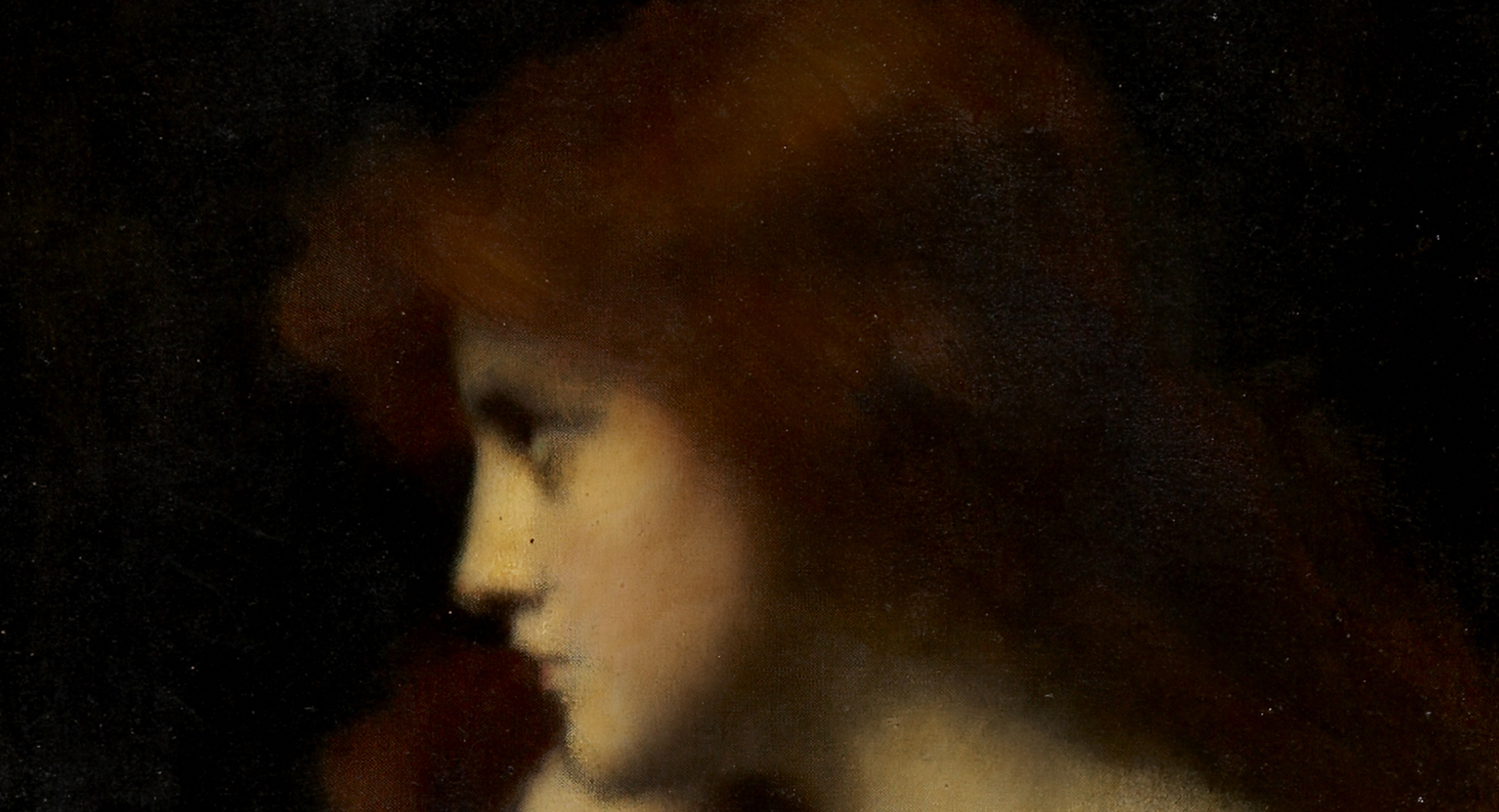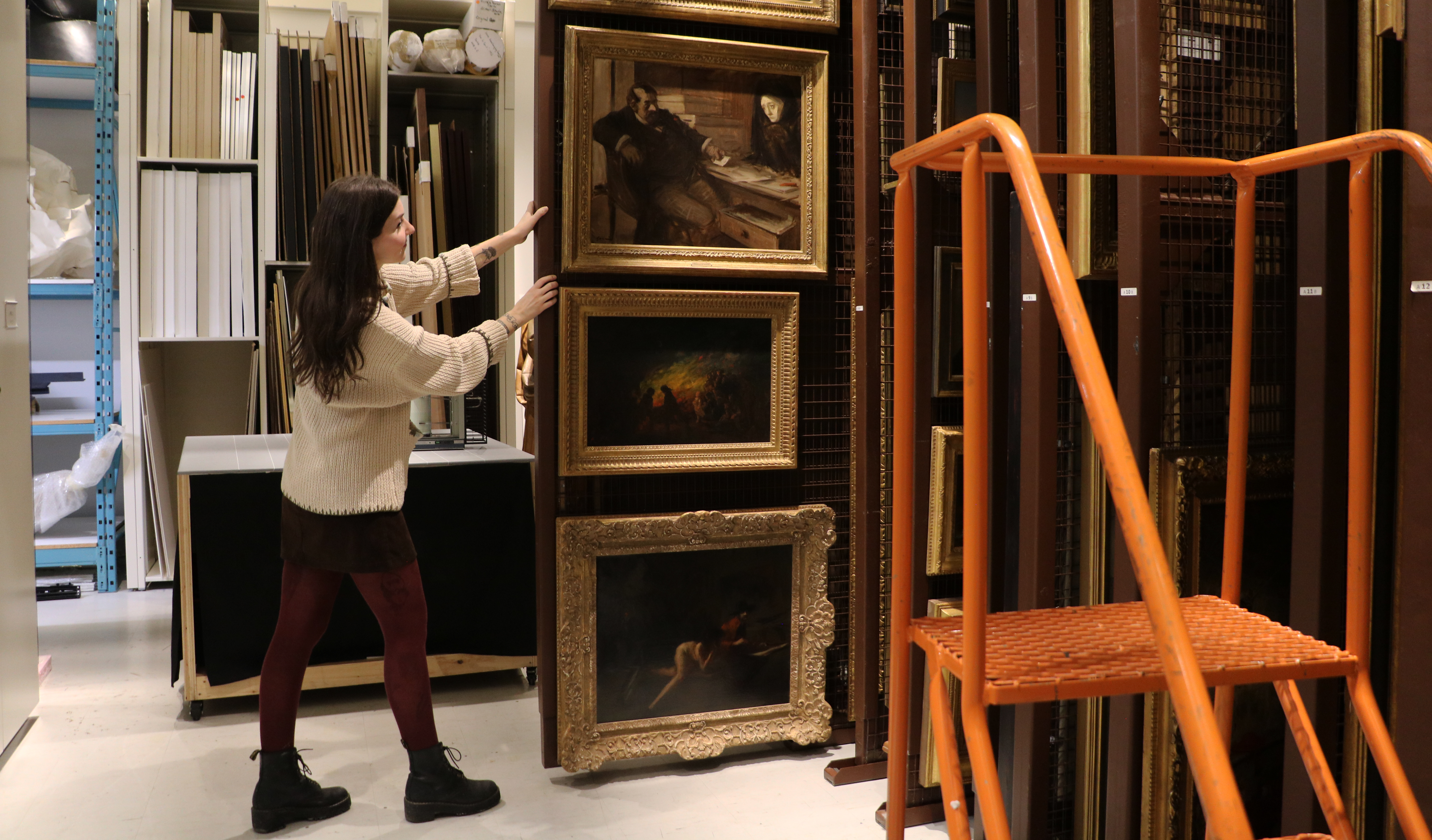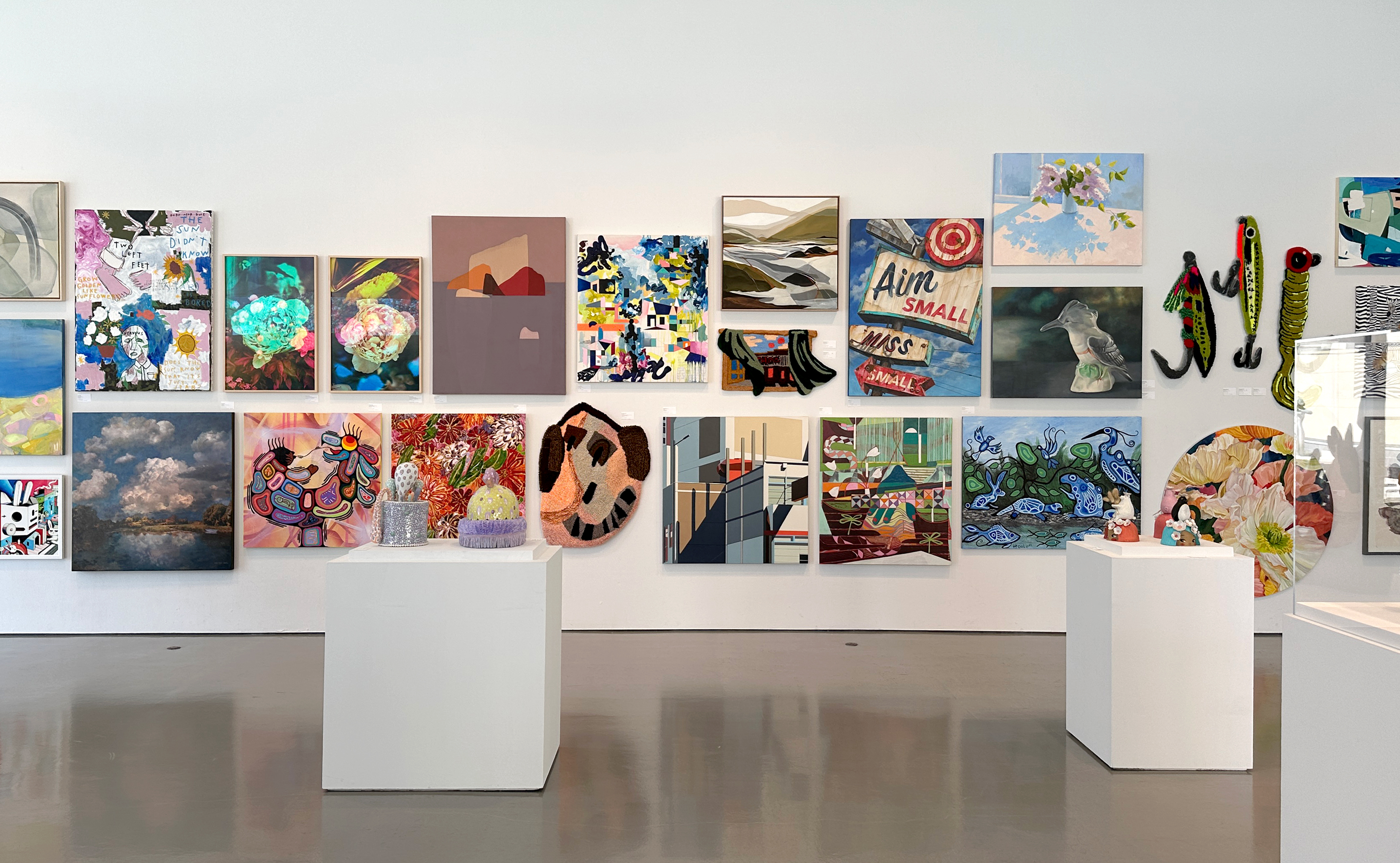The Artist’s Dream: Works of French Symbolism was recently extended until January 10, 2021, giving AGH visitors extra opportunities to enter the world of French Symbolism. Back in April, we published an article by the exhibition’s curator, Dr. Amy Wallace, exploring the important contributions of women artists to the movement, focusing in particular on Sarah Bernhardt, Jeanne Jacquemin, and Camille Claudel. Today, we turn our focus to one of the period’s notable male artists, Jean-Jacques Henner, and his depiction of women as subjects.
A proto-Symbolist known for helping grow the techniques central to Symbolism’s development, Henner explored death and religion, often through a consistent commitment to portraiture. Using the Symbolist techniques of chiaroscuro and sfumato, Henner created dream-like hazy visions of his subjects, heightening portraits into the supernatural realm. If you haven’t yet read our Artist’s Dream Glossary of Terms, we define chiaroscuro as a lighting technique using strong contrasts between light and dark, while sfumato is the subtle blending of colours producing soft outlines, playing with the focus of where the viewer’s eye looks when taking in the work. In Henner’s work, both techniques play with the viewer’s perception of the work, forming an air of mystique around the painting’s subject.
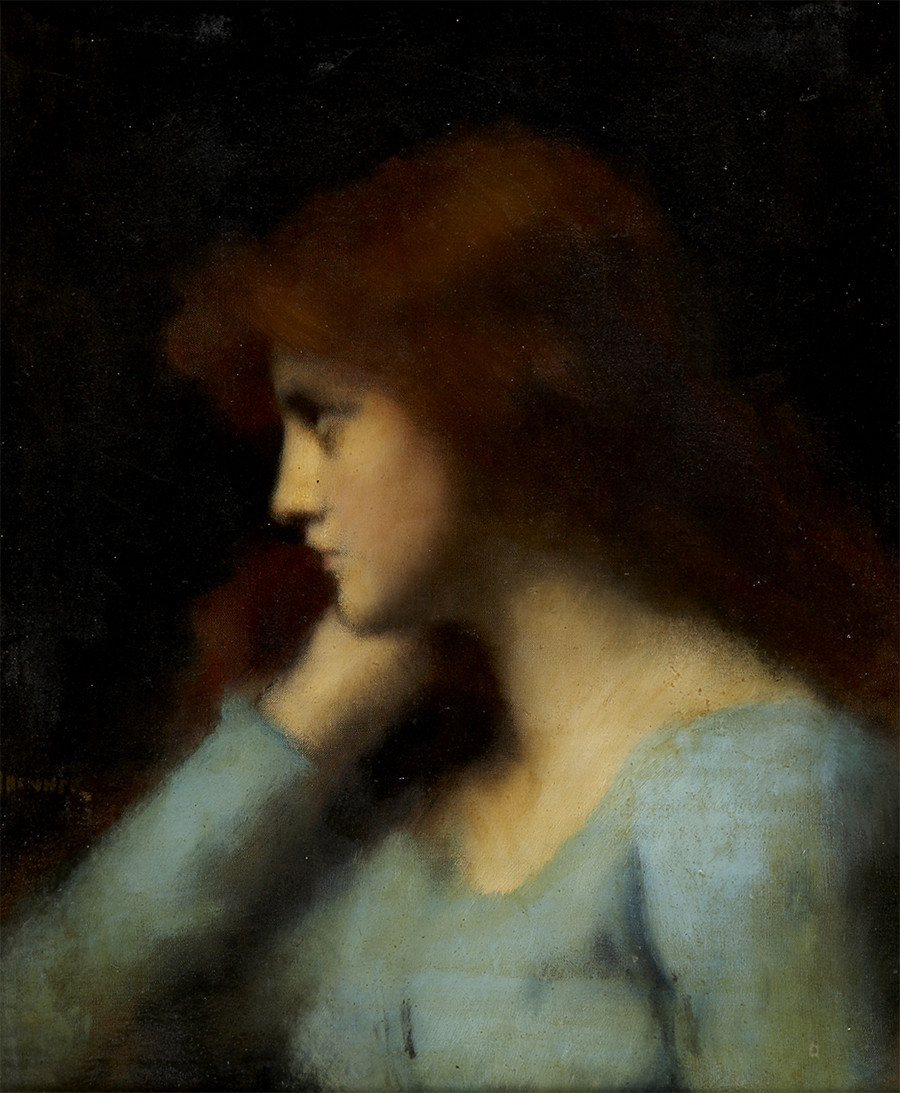
One such dreamy portrait is Contemplation, a major work within the AGH Collection, installed in The Artist’s Dream along with three other Henner portraits – each featuring red-headed women in profile staring off beyond the frame, cast against a dark background. Rife with common Henner motifs complete with the oft-appearing red-haired woman, Contemplation presents its nameless subject deep in thought, standing in stark contrast to the darkness surrounding her, while simultaneously sinking into it. The complement of strong tonal contrast and subtle, soft outlines grant her an air of aloof mystery. Henner portraying his woman subject through this lens thus complicates the relationship between artist and subject, pushing her nearly out of the realm of humanity into one of obscured still life. The artist further emphasizes this shift away from personhood in placing the subject in profile, unable to reach the gaze of both the artist and the viewer.
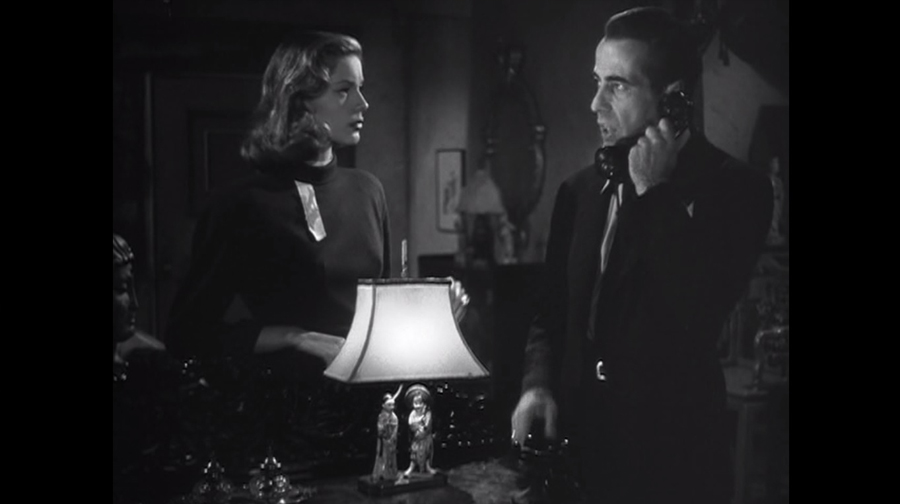
As a lighting technique, chiaroscuro is perhaps most famous for its heavy usage within another art movement with a complicated relationship to its women subjects – film noir. Reaching its popular peak in mid-century Hollywood crime dramas like The Big Sleep and Night and the City, film noir filmmakers employed dramatic chiaroscuro lighting to emphasize the films’ heightened melodramatic plots and the highly-stylized imagery. At the heart of these dramatics often lay two stock character types – the intrepid private eye and the mysterious femme fatale. Contrasting the well-intentioned naivety of the stories’ male detectives, these works cast their typically-villainous female counterparts as mysterious, seductive, and treacherous.
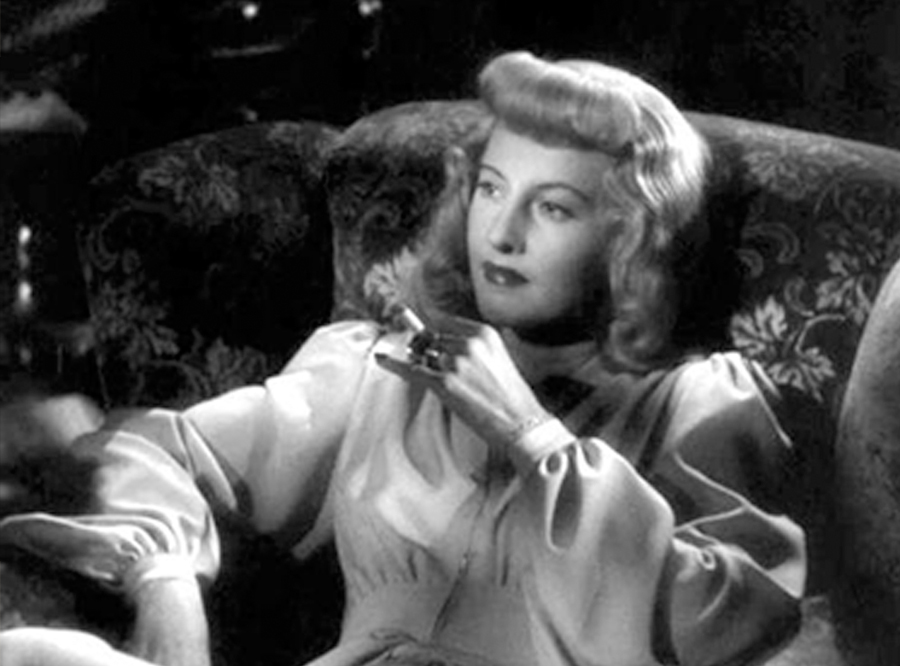
Film noir thus extends the male gaze’s mystification of women subjects from the page to the screen. With roots in ancient folklore and appearing as a common figure in the art of the European Middle Age, the femme fatale character is just one of many such stock types often packaged as objects of mystery by male artists. Indeed, the twenty-first-century coining of the Manic Pixie Dream Girl (MPDG) type shows the persistence of such efforts, defined by film critic Nathan Rabin as “existing solely in the fevered imaginations of sensitive writer-directors to teach broodingly soulful young men to embrace life and its infinite mysteries and adventures.” While Henner’s Contemplation does not enact quite as much force on its viewers as perhaps the MPDG or even the femme fatale, the work nevertheless represents one step in the long history of male artists objectifying their women subjects. The relationship to the women in Henner’s paintings is even further complicated when one considers his efforts throughout his career to provide arts opportunities to women artists like Mathilde Mueden Leisenring and Suzanne Valadon, often as both model and pupil.
To learn more about the other artists featured in The Artist’s Dream: Works of French Symbolism, make sure to read Dr. Amy Wallace’s article on women artists within the movement, along with our Glossary of Terms. Once you’re done, head to the AGH anytime between now and January 10 to see the exhibition in person!
